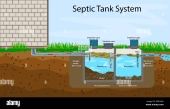
 1
1




Building regenerative Christian villages @
https://jesusvillage.org/




Come join me at www.peacockorchard.com
 3
3








Building regenerative Christian villages @
https://jesusvillage.org/
 3
3








Building regenerative Christian villages @
https://jesusvillage.org/




T Simpson wrote:I've considered doing raised beds along the fence line. Raised beds over the drain field (assuming they are made deep enough) could be an option, but then I'd still be adding in obstacles if the pipes needed to be repaired for any other reason.
Currently that whole field is dandelion, white clover and narrow-leaf plantain. But I'm not sure how far down the field is safe for food crops.
Probably better to not risk trees in drain field and just put them in the compacted gravel. Maybe renting a jackhammer could make digging easier.


 3
3




T Simpson wrote:
The lower half of the property where there are not any water pipes is about 3 inches of gravel with an inch of compacted soil on top (like the drive way on the right side of the picture but with grass grown over it)

|
Get off me! Here, read this tiny ad:
2024 Permaculture Adventure Bundle
https://permies.com/w/bundle
|


